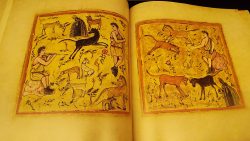UC Clermont Library has started a blog to feature our newest acquisitions!
Each month we will feature a selection of our newest resources, both physical and electronic. You can check it out and subscribe at this link.

UC Clermont Library has started a blog to feature our newest acquisitions!
Each month we will feature a selection of our newest resources, both physical and electronic. You can check it out and subscribe at this link.


The Classics Collection
The Classics collections include more than 270,000 volumes and c. 2,000 journal titles spanning all areas of classical civilization, including language and literature, archaeology, art, history, epigraphy, papyrology, numismatics, palaeography, religion, philosophy, politics, science and technology, and medicine. The collections in all areas of classical studies are outstanding, although especially exhaustive in Greek and Latin philology and Minoan-Mycenaean archaeology. The comprehensive level of current acquisitions continues. A few highlights include some 18,000 German dissertations and Programmschriften in classics, especially philology, from the 18th to the early 20th c., a separate room of more than 2,000 books on Palaeography, the collecting of which began with the namesake of the library, Latin palaeographer John Miller Burnam, some 3,500 early imprints from the 16th-18th c. as well as various incunabula such as Statius’ Thebaid, Silvae, Achilleid from 1483, Diodorus Siculus’ Bibliotheca Historica from 1496, Tacitus’ Historiae from 1497, Justin’s epitome of Trogus’ Philippic Histories from 1497, and Josephus’ De bello judaico from 1499 as well as some exquisite facsimiles of illuminated manuscripts such as Ptolemy’s Cosmographia (Codex Urb. Lat. 277), the Joshua Roll (Codex Vat. Pal. Graec. 431), and the Vergilius Romanus (Codex Vat. Lat. 3867), and a facsimile of the oldest preserved Sophocles manuscript (Florence, Ms. Codex Laurentianus 32.9). The collections also include representations of Medieval Latin in the superb facsimiles of the Book of Kells with 24 mounted color plates (Turin), and the Lindisfarne Gospels (Cottonian Ms. Nero D.IV) from the British Museum. Continue reading